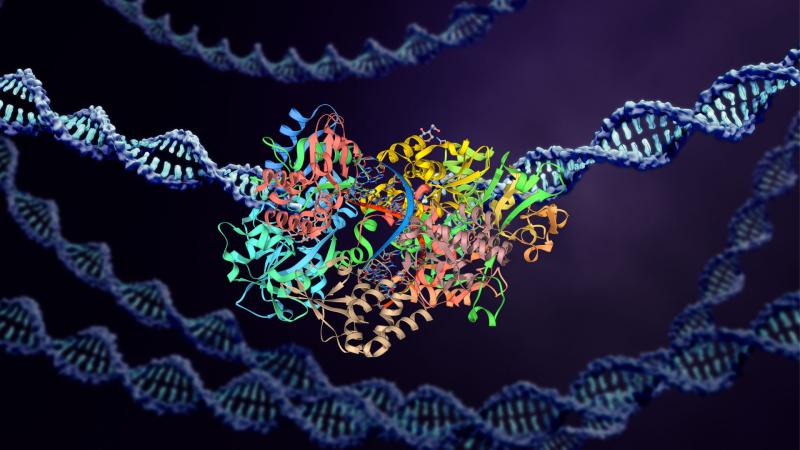
The basis for all life lies in a complex process of converting genetic information encoded in our DNA into functioning proteins. The start of this process, known as gene transcription, is the fundamental step in gene expression, where the genetic information encoded in a segment of DNA is copied into a complementary strand of RNA by the enzyme RNA polymerase. The resulting RNA molecule, such as messenger RNA (mRNA), then carries the instructions for building a protein. In bacteria, a similar process, known as the sigma cycle, governs gene regulation, and a protein called a sigma factor initiates gene transcription.
For a long time, scientists believed that the sigma factor would detach from the primary enzyme, RNA polymerase (RNAP), once transcription was underway. This understanding has been a cornerstone of microbiology, shaping our perspective on bacterial adaptation, survival, and even antibiotic resistance. However, new research is challenging this long-held belief, revealing that for some bacteria, this protein may persist much longer than previously thought. This discovery could fundamentally alter our understanding of bacterial gene regulation and open new avenues for developing innovative strategies to combat bacterial infections or harness bacteria for biotechnological applications.
The sigma factor is a protein essential for bacteria to kickstart the process of transcribing DNA into RNA, the first step in making proteins. Different sigma factors enable bacteria to adapt to various environmental stresses, such as nutrient scarcity or the presence of antibiotics, by regulating which genes are turned on or off. The prevailing sigma cycle theory, largely based on studies of Escherichia coli (e.coli), suggested that the sigma factor would bind to RNAP, help it find the right starting point on the DNA (a promoter), initiate RNA synthesis, and then detach, allowing RNAP to continue elongating the RNA strand alone. This detachment was thought to be crucial for efficient elongation and for the sigma factor to be recycled for new rounds of initiation or to be exchanged for a different sigma factor.
Researchers from Bose Institute, Kolkata, Rutgers University, USA, and Waksman Institute, USA, set out to investigate this question, focusing on Bacillus subtilis, a modified version of E. coli and a bacterium known for its robust survival strategies. In their in vitro experiments, they employed fluorescence-based electrophoretic mobility shift assays (EMSA). This method allowed them to label the sigma factor with a fluorescent dye (TMR) and the DNA with another (Cy5). By observing how these labeled molecules moved in an electric field, they could track the sigma factors' presence in different transcription complexes, from the initial open complex (RPo) to various lengths of transcription elongation complexes (TECs).
Did You Know? The human body hosts trillions of bacteria as part of a diverse microbiome, which is essential for health, including aiding digestion and supporting the immune system. While many are beneficial or harmless, a small fraction can be harmful and cause infections. |
The study showed that Bacillus subtilis’ primary sigma factor, sigma-A, does not release from RNAP during transcription elongation. Instead, it remains firmly attached throughout the entire process. They found that sigma-A was retained at remarkably high levels (92-98%) across all tested TEC lengths.
To ensure their in vitro results reflected what happens inside a living cell, they conducted in vivo experiments using chromatin immunoprecipitation (ChIP) followed by quantitative PCR (qPCR). This technique enabled them to extract DNA segments bound by RNAP and sigma factors from living B. subtilis cells. Consistently, they observed that sigma-A remained associated with RNAP not just at the promoter but also far downstream in the actively transcribing regions, mirroring their in vitro observations.
To understand why sigma-A remained stable, they investigated the stability of its interaction with RNAP. Using a technique called fluorescence anisotropy competition assays, they showed that B. subtilis sigma-A formed a much more stable complex with RNAP and DNA than E. coli’s sigma-70. Interestingly, when the team studied a mutant E. coli sigma-70, which was engineered to lack a specific part called region 1.1 (R1.1), they found that, just like B. subtilis sigma-A, it also remained fully retained on RNAP throughout elongation and formed a highly stable complex.. This suggests that R1.1 acts as a kind of release trigger or destabiliser for sigma factors.
Further experiments using techniques, like transcription pausing assays and Fluorescence Resonance Energy Transfer (FRET), confirmed these findings. The R1.1-lacking E. coli mutant could still mediate transcriptional pausing effectively, even far downstream from the promoter, indicating its continued presence and functionality within the elongation complex. FRET experiments, which measure distances between fluorescent tags, showed that both B. subtilis sigma-A and the R1.1-lacking E. coli mutant not only stayed with RNAP but also moved along with it, or translocated, during elongation.
While earlier studies hinted at the variability in the behaviour of the sigma factor, the new research provides clear evidence of complete retention in B. subtilis and identified a key structural element (R1.1) responsible for the difference. If sigma factors remain associated with RNAP throughout elongation, they could play a continuous role in gene regulation, influencing processes like transcriptional pausing or the recruitment of other regulatory factors. This opens up new avenues for understanding how bacteria fine-tune their gene expression, especially in response to stress or during infection. A deeper understanding of these mechanisms could aid in combating diseases and in various biotechnological applications, from producing biofuels to bioremediation.
This article was written with the help of generative AI and edited by an editor at Research Matters.






